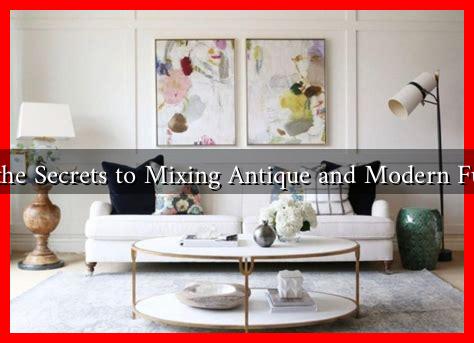-
Table of Contents
- What Are the Secrets to Mixing Antique and Modern Furnishings?
- Understanding the Appeal of Mixing Styles
- Key Principles for Successful Mixing
- 1. Establish a Color Palette
- 2. Focus on Scale and Proportion
- 3. Create Focal Points
- Examples of Successful Combinations
- Case Studies: Real-Life Applications
- Conclusion: The Art of Mixing Furnishings
What Are the Secrets to Mixing Antique and Modern Furnishings?
In the world of interior design, the juxtaposition of antique and modern furnishings can create a unique and captivating aesthetic. This blend not only showcases personal style but also tells a story of history and contemporary living. However, successfully mixing these two styles requires a thoughtful approach. In this article, we will explore the secrets to harmoniously integrating antique and modern pieces in your home.
Understanding the Appeal of Mixing Styles
Combining antique and modern furnishings can yield a space that feels both timeless and fresh. Here are some reasons why this approach is appealing:
- Character and Depth: Antique pieces often carry a sense of history and craftsmanship that can add character to a room.
- Contrast and Balance: The sleek lines of modern furniture can provide a striking contrast to the ornate details of antiques, creating visual interest.
- Personal Expression: Mixing styles allows homeowners to express their individuality and create a space that reflects their personality.
Key Principles for Successful Mixing
To achieve a cohesive look when mixing antique and modern furnishings, consider the following principles:
1. Establish a Color Palette
Choosing a unified color scheme is crucial when blending different styles. A consistent palette can tie together disparate pieces, making the space feel intentional. For example, if you have a rich mahogany antique table, consider modern chairs in a complementary color, such as muted gray or soft beige.
2. Focus on Scale and Proportion
When mixing furnishings, pay attention to the scale and proportion of each piece. A large, ornate antique cabinet may overwhelm a small, minimalist modern sofa. Aim for balance by selecting pieces that complement each other in size. For instance, pair a grand antique armoire with sleek, low-profile modern furniture to create harmony.
3. Create Focal Points
Designate focal points in your space to draw the eye and create a sense of order. This could be an antique chandelier hanging above a modern dining table or a contemporary artwork displayed against a vintage wallpaper backdrop. Focal points help to anchor the room and provide a visual anchor amidst the mix of styles.
Examples of Successful Combinations
Many designers have successfully blended antique and modern furnishings, creating stunning interiors. Here are a few notable examples:
- Mid-Century Modern Meets Victorian: A mid-century modern sofa paired with Victorian side tables can create a striking contrast. The clean lines of the sofa highlight the intricate details of the tables.
- Industrial and Rustic: An industrial-style coffee table can complement rustic antique chairs, creating a cozy yet stylish living area.
- Contemporary Art with Antique Frames: Displaying modern artwork in antique frames can bridge the gap between old and new, adding depth to your decor.
Case Studies: Real-Life Applications
Several homeowners have successfully integrated antique and modern furnishings in their spaces. For instance, a couple in Brooklyn transformed their loft by incorporating a vintage Persian rug with sleek Scandinavian furniture. The rug added warmth and texture, while the modern pieces kept the space feeling open and airy.
Another example is a historic home in New Orleans where the owners mixed contemporary art with antique furniture inherited from family. This blend not only honored their heritage but also created a vibrant and inviting atmosphere.
Conclusion: The Art of Mixing Furnishings
Mixing antique and modern furnishings is an art that requires careful consideration of color, scale, and focal points. By following the principles outlined in this article, you can create a harmonious and visually appealing space that reflects your unique style. Remember, the key is to embrace the contrasts and celebrate the stories that each piece brings to your home. With a thoughtful approach, your interior can become a beautiful tapestry of history and modernity.
For more inspiration on mixing styles, consider visiting Architectural Digest for expert tips and stunning examples.


